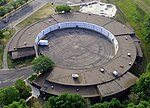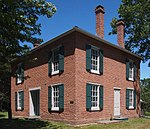Burnsville–Eagan–Savage School District
Burnsville, MinnesotaEducation in Dakota County, MinnesotaSchool districts in MinnesotaUse mdy dates from July 2023

Burnsville–Eagan–Savage is an independent school district in the U.S. state of Minnesota; it serves the city of Burnsville and parts of the neighboring cities of Savage and Eagan.
Excerpt from the Wikipedia article Burnsville–Eagan–Savage School District (License: CC BY-SA 3.0, Authors, Images).Burnsville–Eagan–Savage School District
MN 13,
Geographical coordinates (GPS) Address Phone number Website Nearby Places Show on map
Geographical coordinates (GPS)
| Latitude | Longitude |
|---|---|
| N 44.784722222222 ° | E -93.265833333333 ° |
Address
Burnsville High School
MN 13 600
55337
Minnesota, United States
Open on Google Maps









